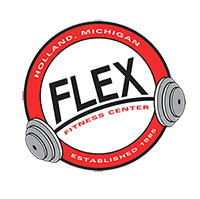
25 Mar How to Balance Weightlifting and Recovery: A Guide from Holland, Michigan’s Flex Fitness Professionals
Weightlifting is an excellent way to build strength, gain muscle, and improve overall fitness. But pushing yourself hard in the gym isn’t the only ingredient for success. To reach your potential and feel your best, you need to balance those tough workouts with a focus on recovery. Let our expert personal trainer in Holland, Michigan, explain why recovery is important and elaborate on how to create a weightlifting routine that lets you reap the maximum rewards, ensuring you achieve your fitness goals safely and effectively.
- Understanding the Basics of Weightlifting Recovery
- Effective Recovery Techniques for Weightlifters
- Creating a Balanced Routine at a Weightlifting Gym in Holland, Michigan (Flex Fitness)
- The Path to Optimal Performance and Health
Understanding the Basics of Weightlifting Recovery
When you lift weights, you’re essentially creating micro-tears in your muscle fibers. This is a normal part of the muscle-building process. It’s during recovery that your body repairs those tears, making your muscles stronger and more resilient. Without proper recovery, you risk injury, burnout, and stalled progress.
An effective recovery strategy has a few basic parts:
- Rest. Rest means both getting enough sleep and taking a day or days off from intense lifting. It is essential for muscle growth and strength gains. Without adequate rest, your muscles may not heal properly, potentially resulting in delayed improvement or, worse, loss of progress.
- Nutrition. Your body needs fuel to repair itself after a workout. Protein helps rebuild muscle tissue. It is recommended to consume around 0.8 grams of protein per kilogram of body weight daily. Carbohydrates replenish your glycogen stores, which are your body’s primary energy source during exercise.
- Hydration. Dehydration can hinder performance and slow down recovery. Make sure you’re drinking plenty of water throughout the day, especially before, during, and after your workouts. As a general guideline, drink eight glasses of water per day, but adjust this amount based on your activity level.
Effective Recovery Techniques for Weightlifters
Here are some specific ways to enhance your recovery:
Active Recovery
Activities such as light cardio, gentle cycling, or a yoga session can significantly enhance blood flow to the muscles. The increased circulation helps deliver essential nutrients and oxygen to the muscles, accelerating the repair process and alleviating muscle stiffness.
Stretching
Stretching after a workout can improve flexibility and range of motion, which can reduce muscle soreness and stiffness. It’s important to focus on both static stretches and dynamic stretches for a well-rounded routine.
Foam Rolling
Foam rolling is a type of self-massage that involves applying pressure to your muscles with a foam roller. It targets the fascia, the connective tissue surrounding muscles, helping to break up muscle tightness, improve blood flow, and reduce pain and inflammation.
Massage Therapy
Massage therapy can be a great way to target stubborn knots and areas of soreness that you can’t reach with a foam roller. Whether administered by a professional or through self-massage tools, it helps improve circulation, reduce muscle tension, and promote relaxation.
Sleep
Aim for 7-8 hours of quality sleep each night. During sleep, your body releases growth hormones essential for muscle growth and repair. To improve sleep quality, establish a consistent bedtime routine, reduce screen time before bed, and make sure your sleeping environment is conducive to rest.
Creating a Balanced Routine at a Weightlifting Gym in Holland, Michigan (Flex Fitness)
Knowing how to recover is one thing – it’s another to fit it seamlessly into your routine. So, how many rest days? What exercises on which days? Here’s an example of a weekly workout plan with recovery in mind:
- Monday: Heavy leg day
- Tuesday: Upper body strength training
- Wednesday: Active recovery or rest
- Thursday: Chest and shoulders
- Friday: Back and biceps
- Saturday: Active recovery or rest
- Sunday: Full Rest
It’s best to mix up your weekly routine with different types of workouts and include days focused solely on recovery. That way, you’re not just hammering away at the same muscles day in and day out, which can lead to burnout and injury, but rather taking a comprehensive approach to your health and fitness. Plus, consider a personal trainer for weightlifting who can help you design a custom routine that fits your goals and recovery needs.
Our weightlifting gym in Holland, Michigan, offers a range of facilities and services that support a balanced fitness routine. From comprehensive fitness coaching, which includes guidance on recovery techniques, to access to recovery equipment, we’ve got everything you need to ensure your recovery is as effective as your workouts.
The Path to Optimal Performance and Health
Balancing weightlifting with proper recovery helps you progress towards your fitness goals in a healthy way. Remember, it’s a process. Listen to your body, and don’t be afraid to experiment with different recovery techniques. If you need expert guidance on putting together a workout and recovery plan, Flex Fitness Center is ready to guide you. Our certified personal trainers can help you find the perfect balance between pushing your limits in the gym and giving your body the rest it needs to thrive. To learn more, contact us at (616) 396-2901 or here.

